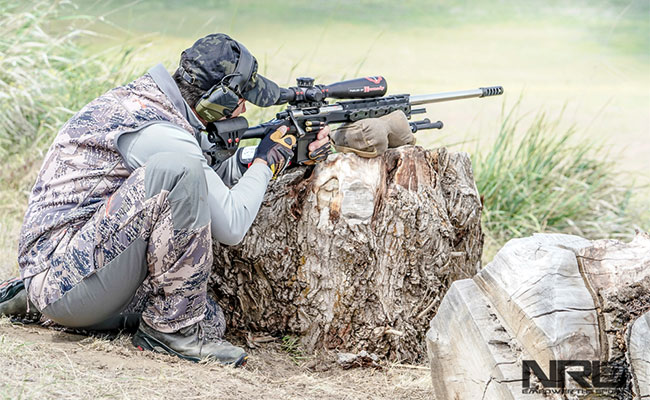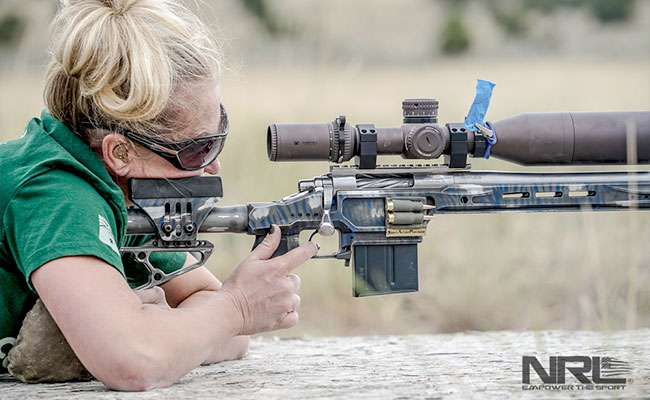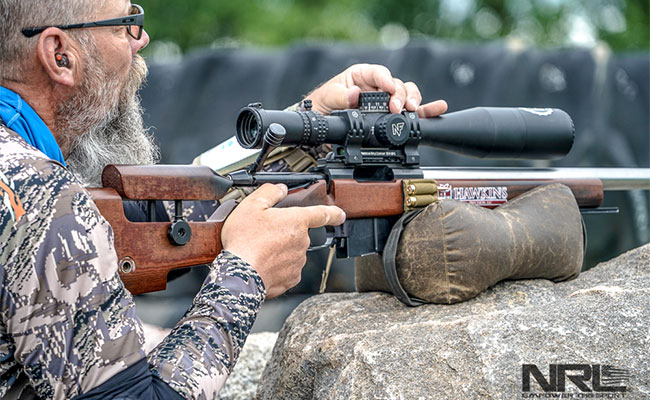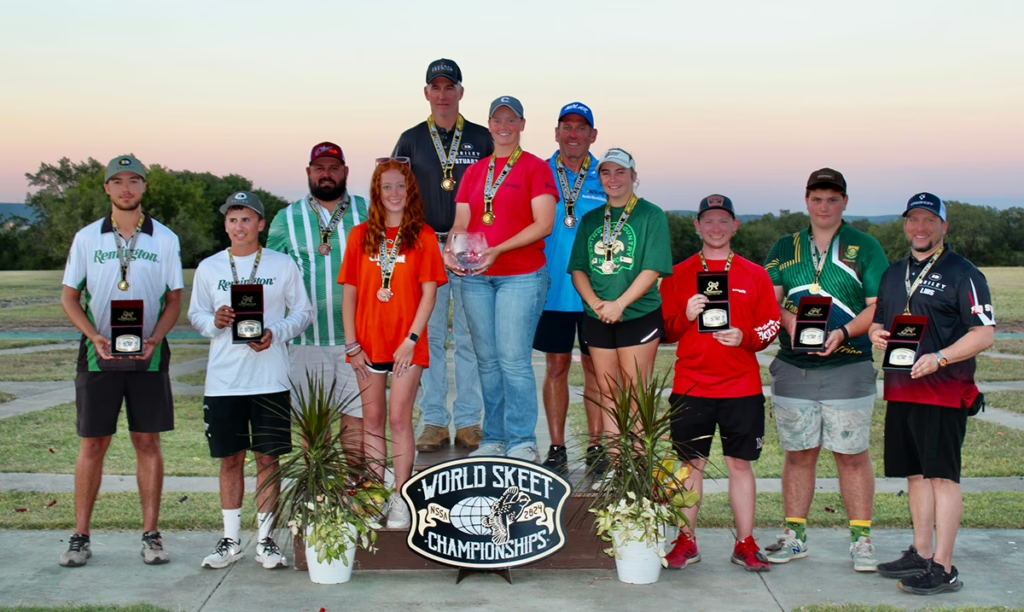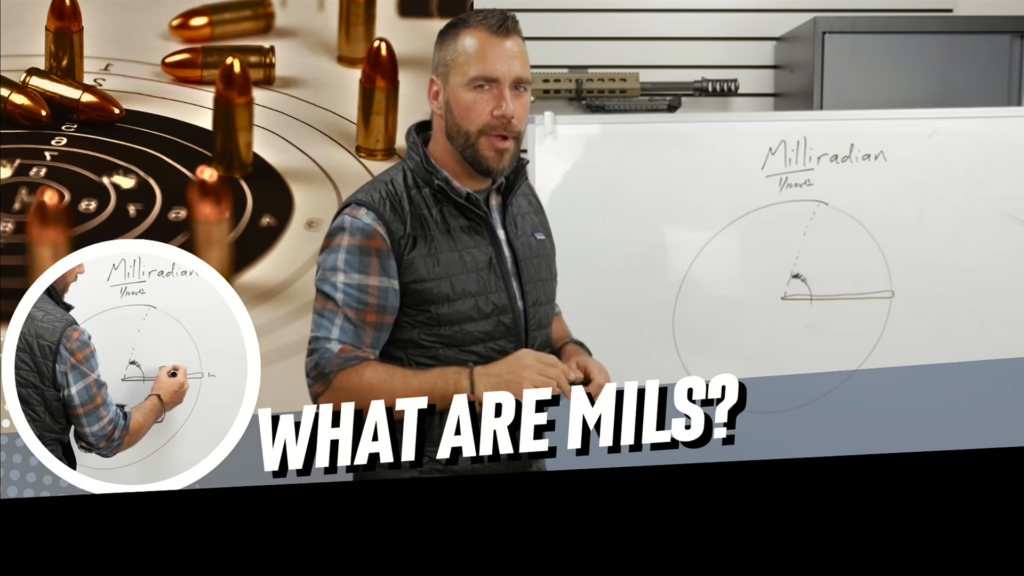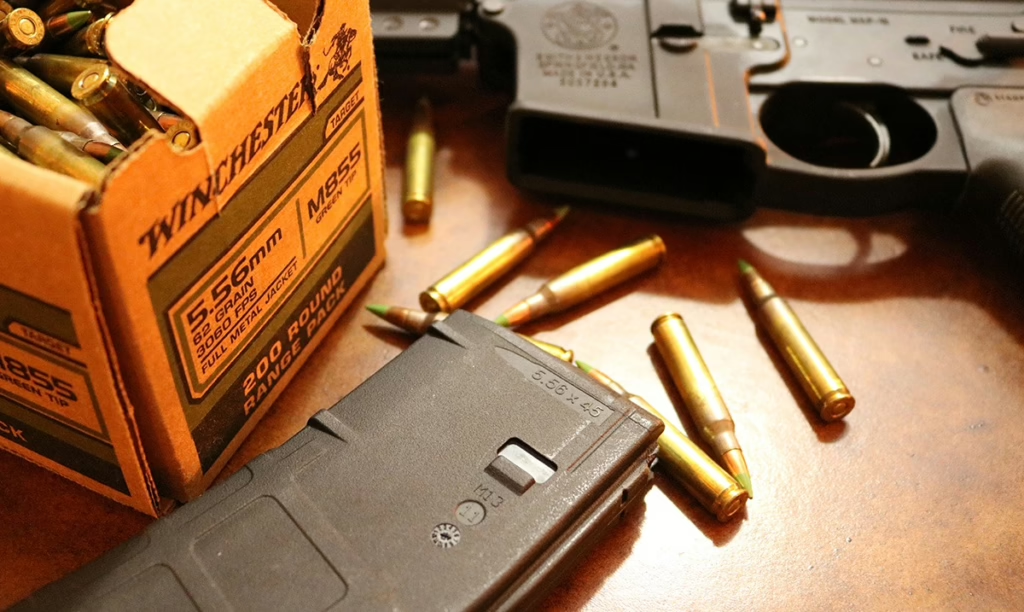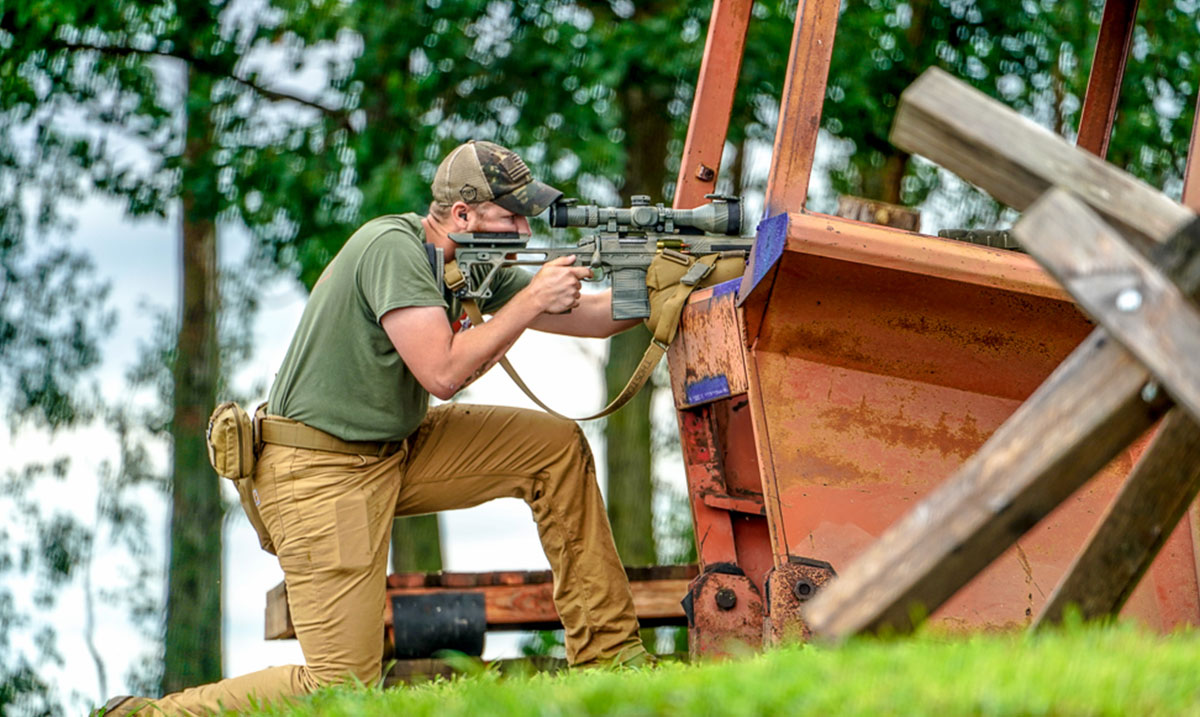
By: Serena Juchnowski
Precision rifle and long-range shooting are terms currently tossed about in the shooting world. It seems like everyone has a precision rifle or a long-range rifle. The truth is, there are many different applications for those types of rifles, but the National Rifle League (NRL) is at the heart of precision rifle competition with a dedication to marksmanship.
Travis Ishida, founder of the NRL, described the organization. “The National Rifle League is a 501c3, not for profit organization that is specifically dedicated to the sport of precision rifle. We focus on safety, education and empowering people within our sport and the companies and manufacturers for our market.” Ishida founded the NRL in 2016 with co-founders Tyler Frehner and Brittney Weldon.
The NRL did not invent the discipline of precision rifle. It began as a grassroots sport in approximately 2010 as a sort of tactical precision rifle challenge. Competitors mixed positional shooting with natural terrain like rocks and man-made obstacles like barricades. Much of the appeal of precision rifle matches comes from imaginative and unique courses of fire. Ishida noted that in some matches competitors fire out of helicopters as well as old vans and vehicles. “Tactical” was dropped from the discipline’s name because it is more of a sport than a training exercise.
Each stage is timed, and competitors fire at an array of primarily field targets, although paper and moving/reactive targets may also be used. “Typically, you’re gonna have a 90-second par time to complete the stage,” Ishida explained. “Most stages are 10 rounds. Occasionally you’ll find other stages that have 12 or slightly more.” Every competitor will receive a briefing before each stage with their squad, the people with whom they are shooting during the match. Each impact is usually counted as a point, but a match director may design a stage with the ability to gain or lose points. The person with the highest number of points wins.
The NRL keeps track of all of its members’ scores. “There’s a formula that is utilized to track their scores based off their overall score for the match plus placement. So depending on what place they got there’s an algorithm or formula that’s utilized by our team to figure out their actual national placement, and at the end of the year we’ll hold a national championship to find out who the best in the country is,” Ishida said.
NRL matches are a specific type of sanctioned PRS match. PRS can stand for Precision Rifle Shooting, the discipline itself, or Precision Rifle Series, another sanctioning body of precision rifle shooting. This double use of acronyms causes some confusion within the community. The Precision Rifle Series was the first organization to provide structure for the sport of precision rifle series and hosts a variety of successful matches. NRL has taken a slightly different approach, seeking to make matches community-based events.
The NRL encourages match directors to host events for families after the match. “We’ve had match directors do anything from bowling tournaments after a match, karaoke, pig roasts . . . . We’ve done a whiffle ball tournament. We encourage our match directors to do something fun after the match so that competitors and their families can get together to know each other on a more personal level than just competition,” Ishida commented.
In the spirt of inclusion, the NRL has also focused its energy and resources on recruiting women and youth to the sport. The NRL also has a unique loaner rifle program that allows people to try the sport without needing to purchase equipment. Several types of competition available. “With the success of the NRL centerfire, Tyler and I recognized that although we were trying diligently to get more women and children involved, it just wasn’t feasible. A lot of people were still hesitant because, you know, it’s a lot of money. Typically these calibers are have recoil and they’re a little bit louder, so the NRL 22 was born. The NRL 22 utilizes the same style of discipline but everything is done with a .22 long rifle. So it makes it a lot more affordable and easy for anybody to get involved.” The year 2020 also saw the birth of NRL 22x, a more challenging version of NRL 22. Like NRL centerfire matches, NRL 22x allows any course of fire with any distance for which impacts can be called reliably. The NRL also has the Border War Series, one-day regional centerfire matches that pit competitors from different regions of the U.S. against one another.
“What we’ve done is we’ve really created a system where new shooters can get into the sport and they can graduate from .22 to .22x, which gets a little bit harder, to a one-day regional series where they’re competing just on a local level . . . and once they’ve got comfortable with that and they want to graduate into a two-day national match, they can do that.” All NRL centerfire matches not part of the Border War series are National-level matches. Anyone can attend, even non-NRL members, but you must qualify and receive an invitation to the National Championship.
Though NRL matches are more highly concentrated in the western United States, the sport of precision rifle has soared in popularity. Most centerfire competitors are competing with .30 caliber or less, usually a 6mm variant. Matches include targets from 100 to 800 yards. Some matches include mile shots, others include a paper stage for best groups. Tie-breakers normally involve timed stages. Competitors must adjust wind and elevation during the stage and are faced with any number of targets at any number of distances. Most of the time, match directors tell competitors what to expect in advance; other times, they don’t. “Each stage is very unique and dependent upon what the match director’s imagination safely allows them to do based on the range facilities,” Ishida reported. “There have been stages where you’d have to engage five targets in 90 seconds . . . and often times you’re changing positions so it’s not one static position for each stage. Some stages you’ll have one target, but you’ll have to move into five different positions.”
A dedicated team of volunteers ensures that all competitors feel welcome and can reach their full potential. Educational ambassador Marchand Hovrud developed a curriculum and program that has been presented in classrooms and to groups that educates listeners on the sport of precision rifle. A Young Guns and a Women’s ambassador also make sure that young and female competitors alike have someone relatable to ask questions to. The NRL is special because it is not only an organization that sanctions matches, but a community that educates and empowers.
Learn more at nationalrifleleague.org
Check out these videos on Long-Range Shooting


